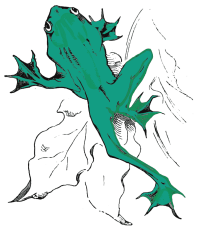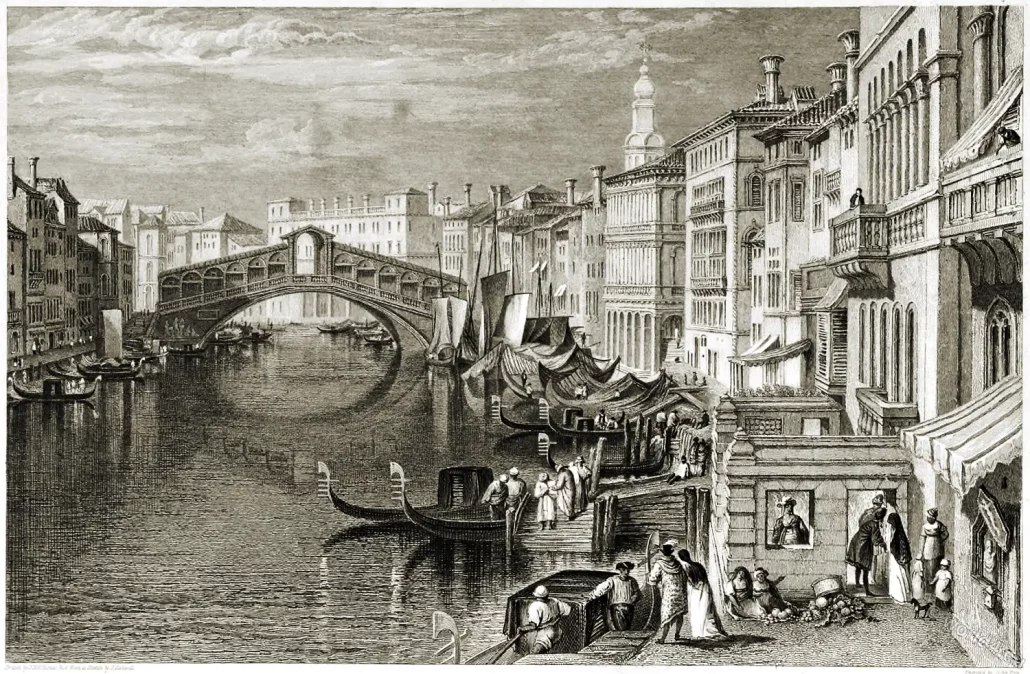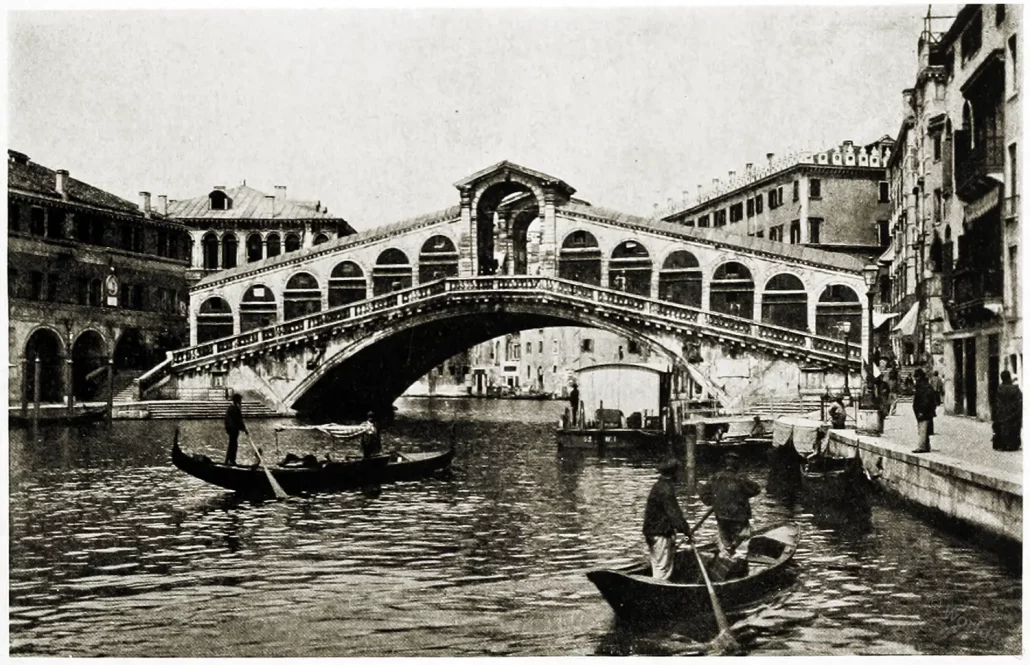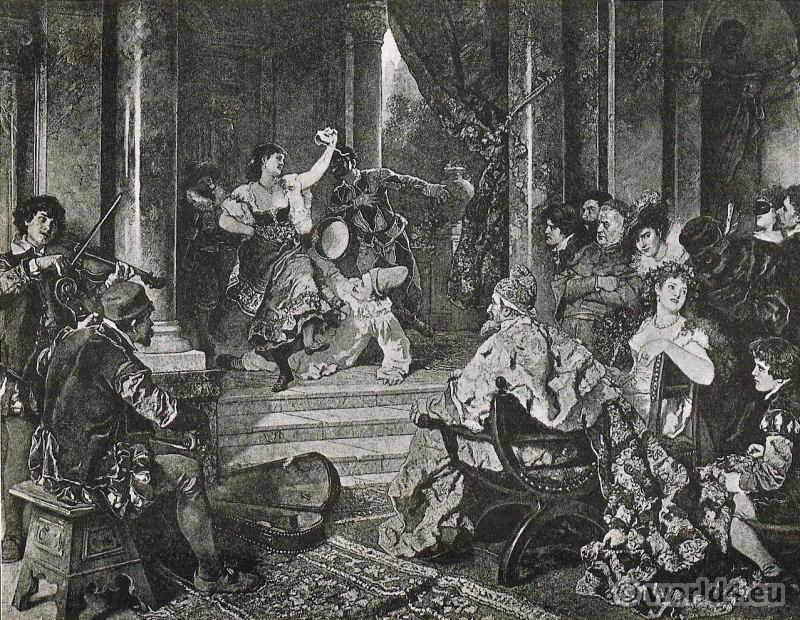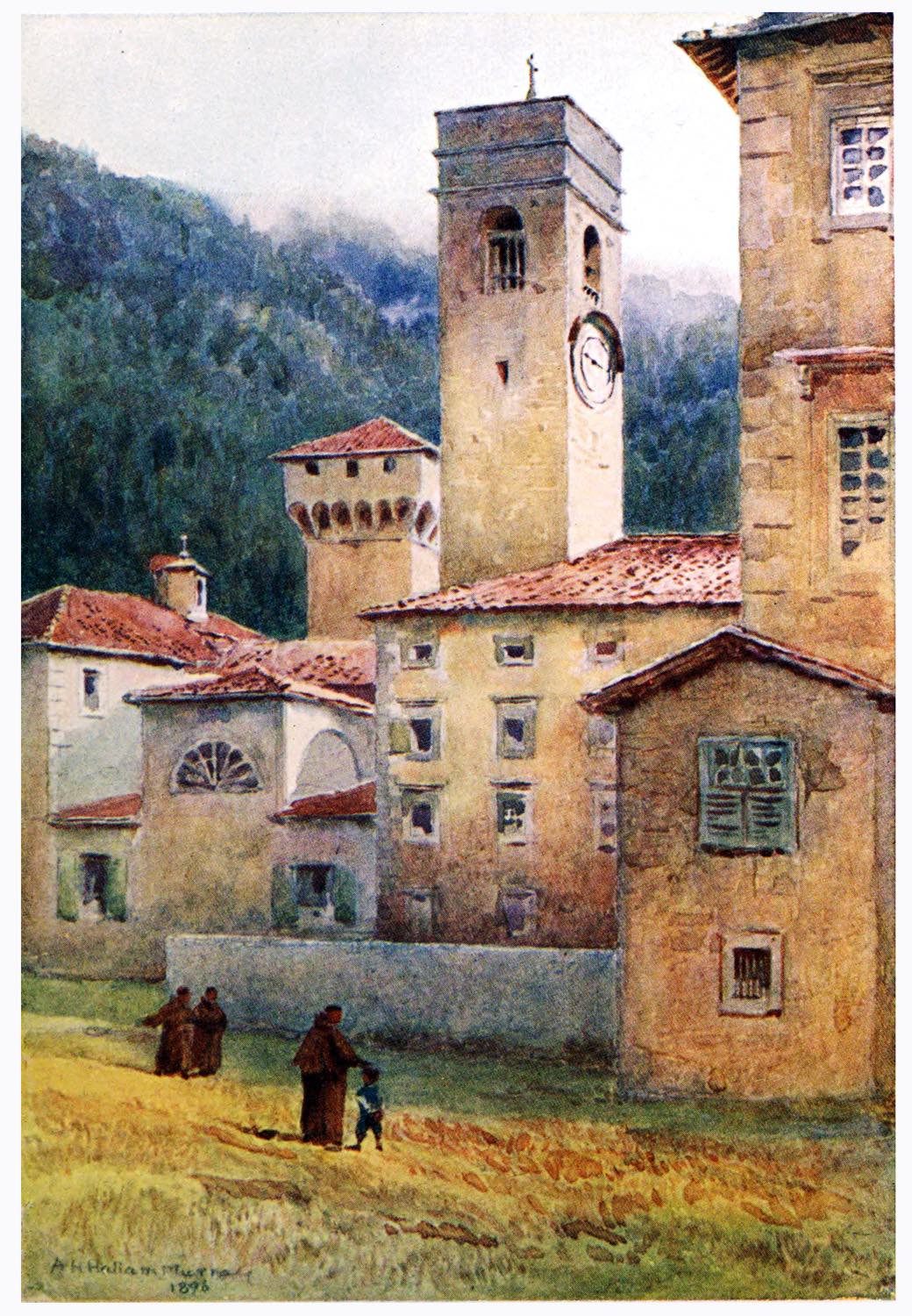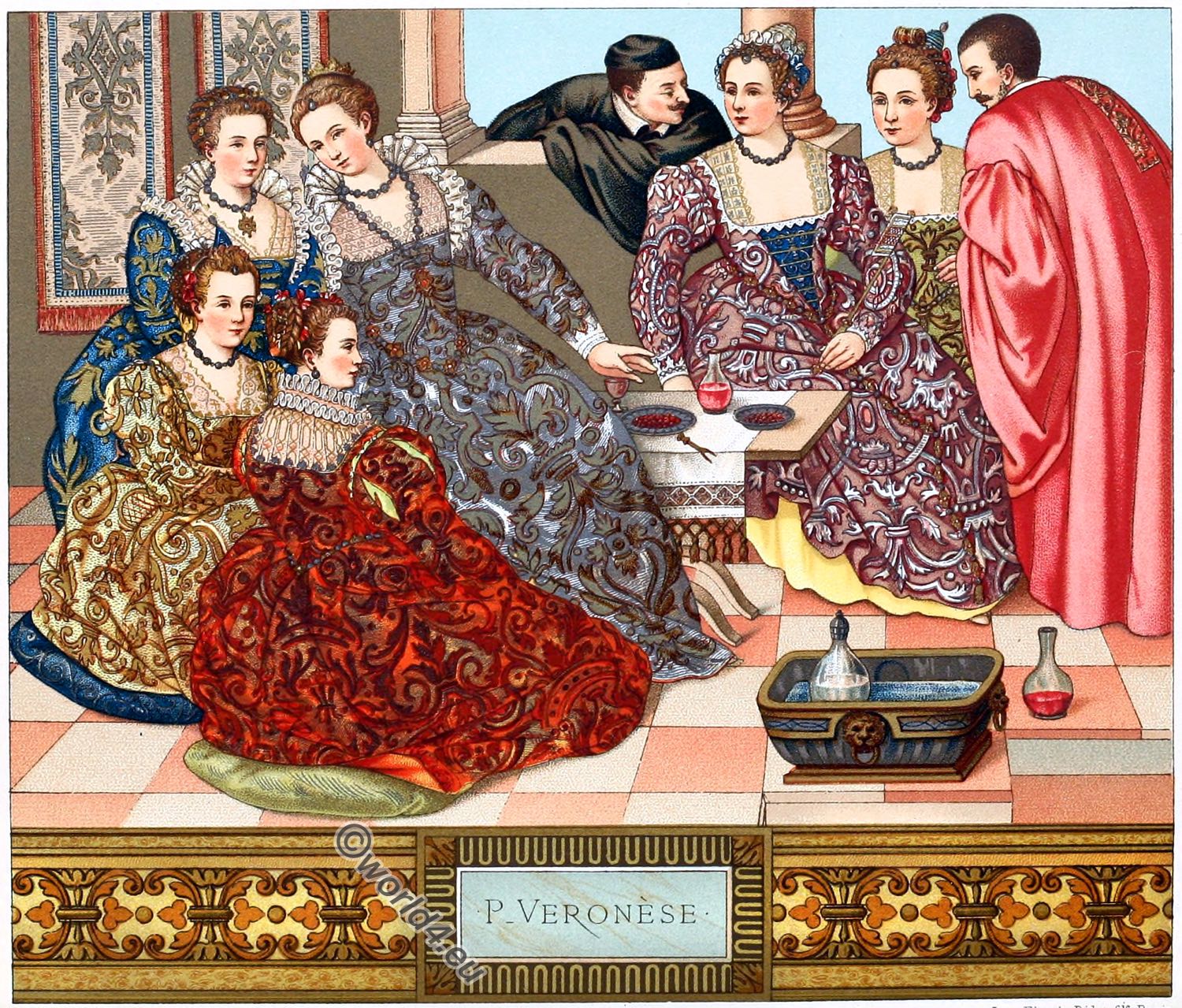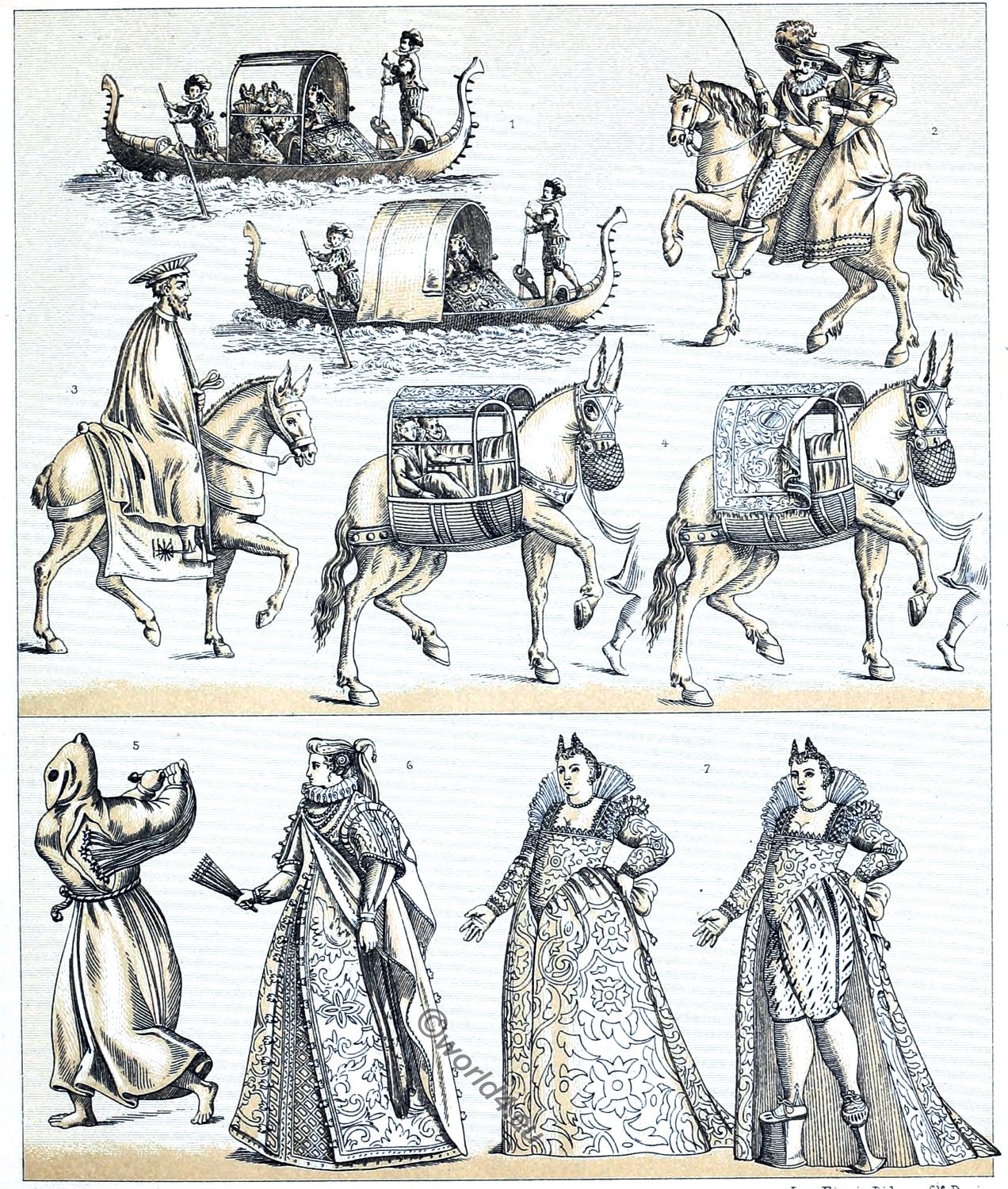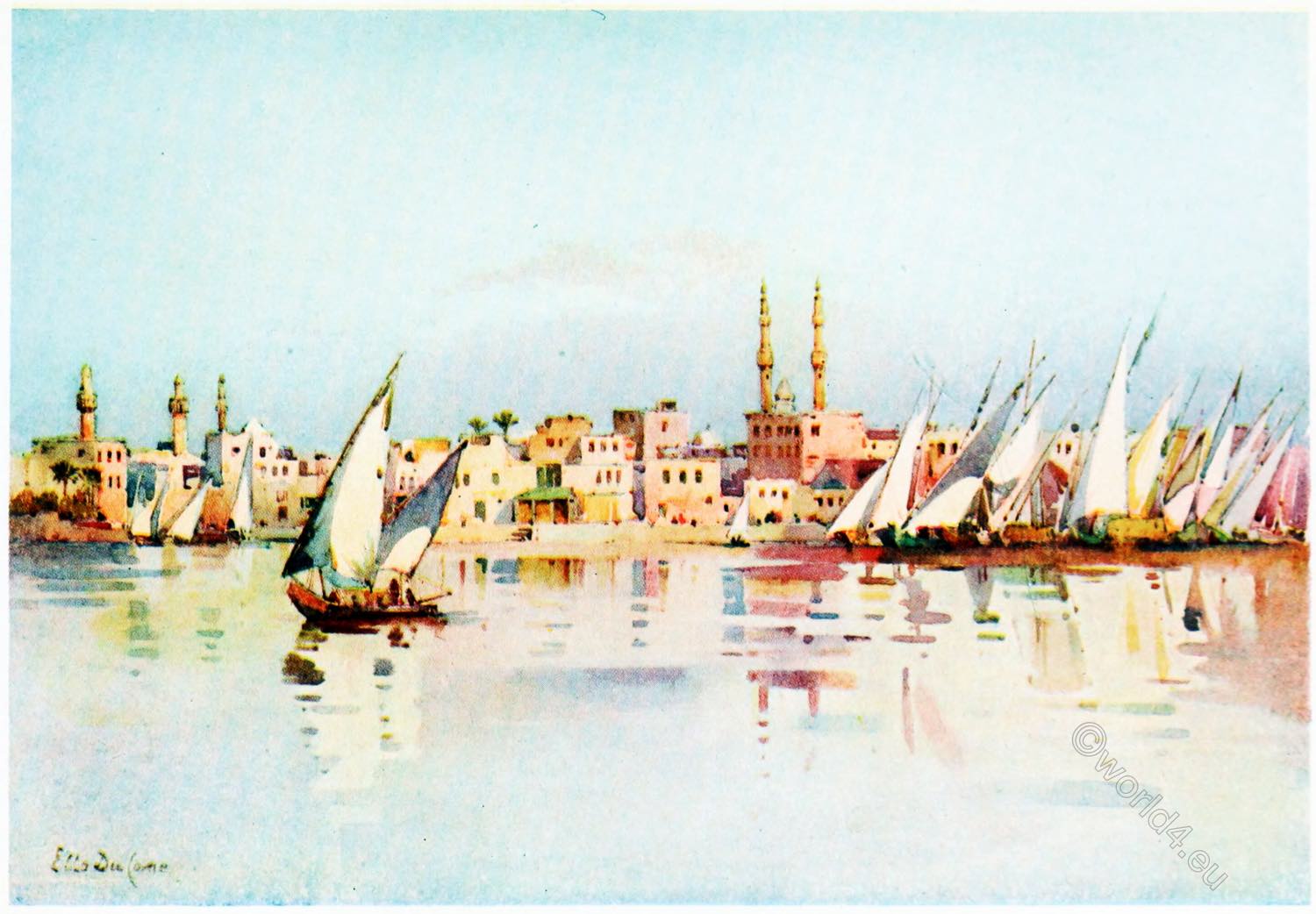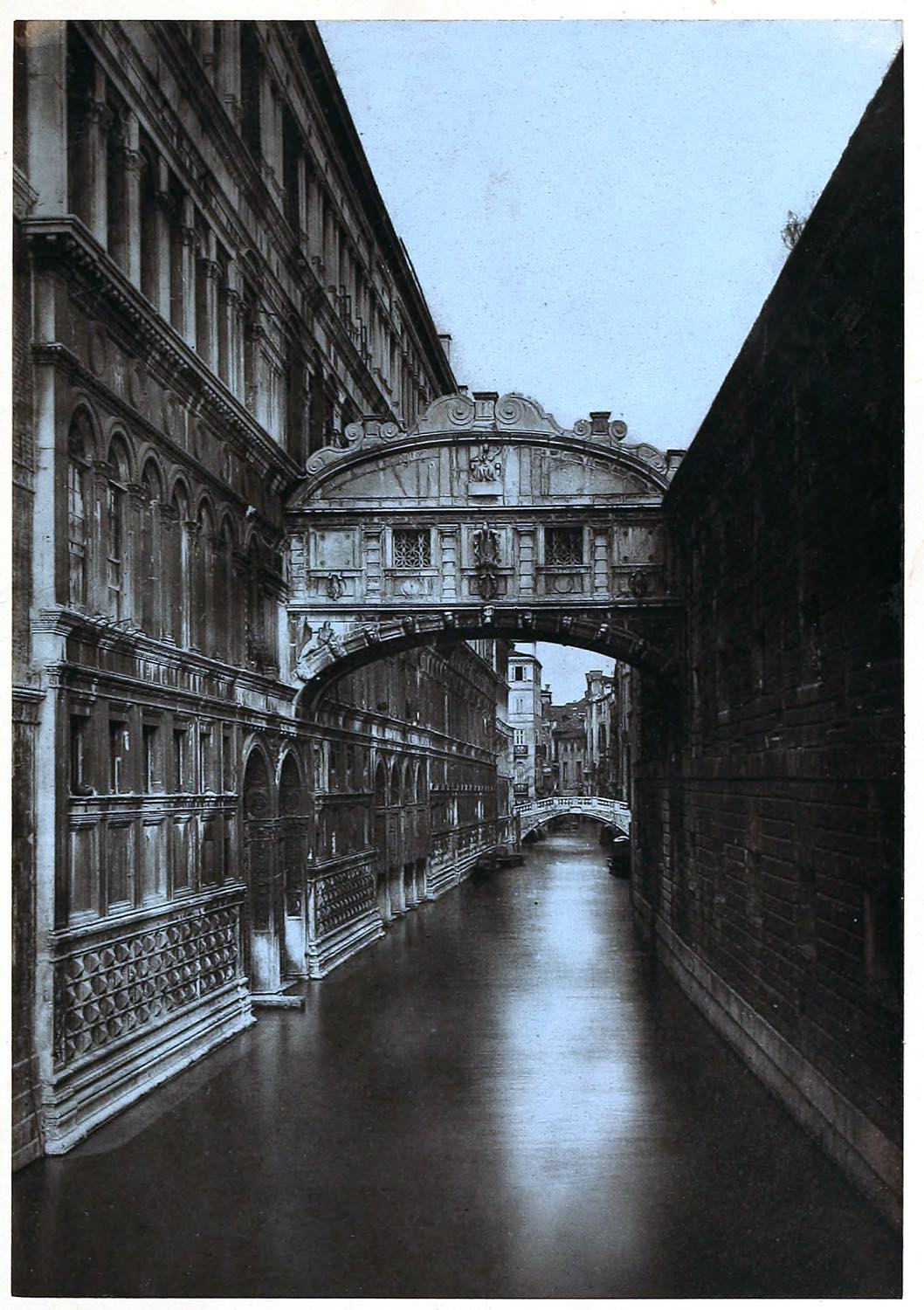VENICE.
The Rialto Bridge
by James Hakewill
The celebrated bridge of the Rialto was built under the government of the Doge Pascal Cicogna, whose armorial bearings are carved in stone on the centre of the arch. From the foundation of the city of Venice down to the middle of the thirteenth century, the inhabitants of the Eastern and Western islands, which are separated by the grand canal, had been used to no other means of communication than what their ferry-boats afforded: at this time, however, the inconvenience of this mode of passage was in some measure remedied by the erection of a wooden bridge, which took the name of the Ponte della Moneta, from its saving the payment of the customary passage fee.
The bridge falling into decay in process of time, it was proposed to renew it in stone, and designs by Sansovin and Palladio were given in for that purpose; but the perpetual wars in which the state was engaged, prevented, for many years, the accomplishment of this project and it was not till the year 1588 that it was resumed, when amidst; other schemes for the improvement of the city, this bridge was constructed upon a model furnished by an architect known under the name of Antonio Dupont. It is by no means remarkable for its beauty, though it’s erection excited much public attention at that day. The span of the arch is not more than eighty-nine feet, being more than a third less than that of the Ponte di Caslello at Verona, and much inferior in dimensions to that of many specimens to be seen in our own metropolis.
The space above is divided into three parts; — a street in the middle bounded by shops, and a narrower one on each side between the shops and the balustrades: these shops contribute in a great degree to disfigure the bridge, by the heavy air which they impart. The ascent is made easy (for the elevation is considerable) by steps, no provision for any other than foot passengers being necessary at Venice. The design of Palladio has been painted by Canaletto; and this picture, together with another in which he has represented a very elegant design for the same purpose by himself, is now in the possession of Signor Corniani, at Venice.
The Heneti, originally a colony from Asia Minor, had been for many ages settled in that part of the continent which lies contiguous to the islands on which Venice is built; they were disturbed, however, by the tumultuous passage of the army of the Goths who invaded Italy from the Eastern Alps, and a considerable body retired hither and established a community, that, from being a place of banishment and refuge, increased with time to be a mighty state, and the mistress of the Adriatic sea.
The island of the Rialto was originally the favourite settlement; and we are informed that a church was built there, and dedicated to St. James, in a period as early as the year 421 A. D. It was erected on the spot where the modern church of St. Giacomo di Rialto now stands, a few paces to the left of the bridge.
It may be remarked that this spot witnessed the last effort that was made in defence of the independence of Venice; when a band of the lowest description was gathered together with the avowed intention of fighting for those liberties which their government had so cowardly given up.
The French army under Buonaparte was then about to take possession of the place; the disgraceful engagements which they had entered into were on the point of being fulfilled; but it was not till the people had received a murderous fire from the Italian troops, whom the provisional government had stationed on the Rialto, that they were dispersed, and taught to feel the real hopelessness of their condition. This took place on the 17th of May, 1797.
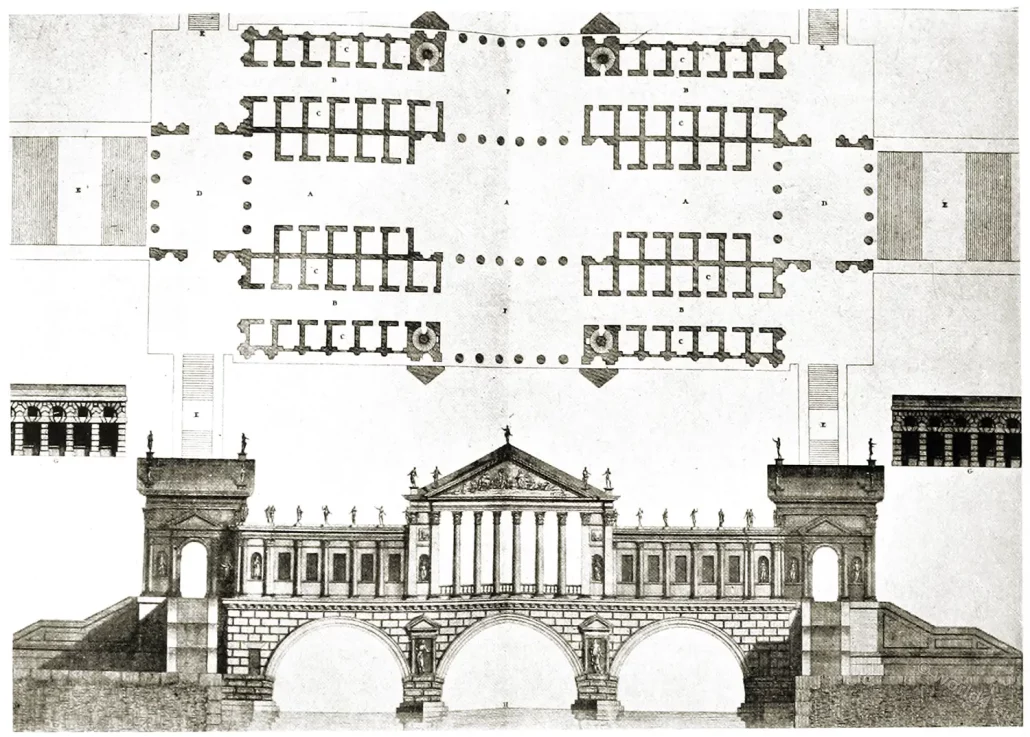
The Rialto Bridge
by Charles Smith Whitney
In Italy, about the middle of the sixteenth century, a number of bridges were built by Palladio, one of the most talented architects of the Renaissance. He adapted the details of the Roman bridges and frequently used the motive of the bridge at Rimini with the ornamental niches over the piers. He made a design for the Rialto Bridge over the Grand Canal in Venice which unfortunately was not carried out (Plate 104).
In his own words, “Very fine, in my opinion, is the design of the following bridge, and perfectly suited to the place where it was to be built, which was in the middle of one of the greatest and most celebrated cities of Italy, the metropolis of many other cities and trading almost to all parts of the world. The river is very large, and the bridge was to have been built just at the very spot where the Merchants come together to negotiate and treat of their affairs. Wherefore, as well to preserve the grandeur and dignity of the said City, as very considerably to increase the revenue of the same, I designed the bridge so broad as to make three streets upon it; that in the middle large and fine, and the other two on the sides somewhat less.”
Without the palatial superstructure, the bridge itself is quite simple and dignified. It has details in common with both the Pons Augustus at Rimini, and the Pons Aelius. The treatment of the piers is especially interesting. They are of heavy rusticated stonework, extending up above the springing of the curve of the arches in the manner of the Persian bridges.
Some years after Palladio made his design for the Rialto Bridge, the City of Venice held an open competition which was won by the design of Antonio da Ponte, whose bridge was built in 1590 (Plate 105). It has a single span of nearly ninety-four feet, richly ornamented with moulded archivolt, cornice, balustrade, and carvings on the spandrels. There are two rows of shops with passages along the center and the railings. Although less monumental than Palladio’s design, it is considered one of the finest of the Italian bridges.
Source:
- A picturesque tour of Italy, from drawings made in 1816-1817 by James Hakewill (1778-1843); Turner, J. M. W. (Joseph Mallord William). London: John Murray, 1820.
- Bridges; a study in their art, science and evolution by Charles Smith Whitney. New York, W.E. Rudge, 1929.
